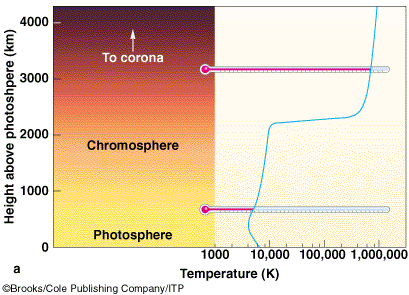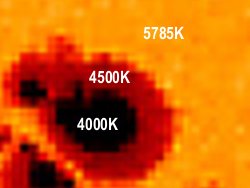|
SOLAR DYNAMICS Stars transform photons into protons composing their solar winds which induce monopole charge in the same instant, as 2 electrons cycle through singularity with a positron trio> Like monopole charges induced in the same instant are electrically repelled, powering the solar wind which fills the heliosphere with solar ions.
Starlight ionizes atoms in deep space freeing electrons. Electrons induce monopole charge in the same instant as solar ions, and opposite charges induced in the same instant are electrically attracted inducing a voltage potential between stars and deep space. The voltage potential powers solar electric currents which transform the momentum of spiralling charges into dipole moments and sum of moments into a field along the rotation axis attracting electrons sunward with a force which increases directy as the current amperage. Solar electric currents increase the voltage potential between stars and deep space and the currents transform the voltage potential into kinetic energy until electrical resistance of the corona transforms kinetic energy into photons, radiating outward as starlight and downward, radiating the ferrite core below the mantle.
Photons radiation transforms into electron positron pairs at the core surface where electrons transform into field lines, resulting in residual positrons. Positrons merge into trios, 3 trios are trapped by 4 transiting electrons and transform into protons. At high photon energy, electron positron pair production is the dominant mode of photon interaction with matter. First observed in Patrick Blackett’s cloud chamber, leading to the 1948 Nobel Prize in Physics. If the photon is near an atomic nucleus, the energy of a photon can be converted into an electron–positron pair: Protons compose the mantle of liquid hydrogen, the solar wind and interstellar medium of ionized plasma gas, and protons and electrons transform in endothermic reactions into elements composing the core surface, and transform in exothermic reactions into lighter elements composing the corona, CMEs and supernovas of ionized coronal mass.
Temperatures in the corona are upwards of 2 million degrees Fahrenheeit, while just 1,000 miles below, the underlying surface simmers at a balmy 10,000 F. How the Sun manages this feat remains one of the greatest unanswered questions in astrophysics; scientists call it the coronal heating problem. The mantle is cooled from below by transformation of photons into protons and cooled at the surface by endothermic transformation of liquid into the ionized gas composing the solar wind which escapes from the corona from sunspots and coronal holes.
The ionized rotating cores of stars transforms the momentum of moving charges into dipole moments. The sum of moments is captured by the solar field which increases the momentum of orbiting ions in the direction of core rotation, powering super-rotation of the solar atmosphere and solar wind.
The solar field captures repelling forces between core ions. When gravitational collapse disrupts the fields of first generation stars repelling forces between core ions are restored and the star goes supernova.
The solar wind escapes from coronal holes and sunspots, carrying solar field lines antisunward in the orbital plane, filling the heliosphere with conductors grounded in the corona around the poles which capture electrons electrically attracted to the solar wind which conduct electrons sunward which increases inversely as field line deviation from the sunward path. |
Atoms are electrons and positrons 2d & 3d photon quanta with opposite and like polarity to the fields of stars and planets








